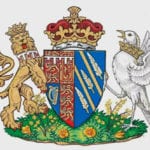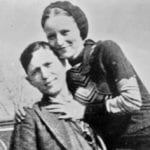 Weird Stuff
Weird Stuff  Weird Stuff
Weird Stuff  Our World
Our World 10 Ways Your Christmas Tree Is More Lit Than You Think
 Movies and TV
Movies and TV The 10 Coolest Stars to Set Sail on The Love Boat
 History
History 10 Things You Didn’t Know About the American National Anthem
 Technology
Technology Top 10 Everyday Tech Buzzwords That Hide a Darker Past
 Humans
Humans 10 Everyday Human Behaviors That Are Actually Survival Instincts
 Animals
Animals 10 Animals That Humiliated and Harmed Historical Leaders
 History
History 10 Most Influential Protests in Modern History
 Creepy
Creepy 10 More Representations of Death from Myth, Legend, and Folktale
 Technology
Technology 10 Scientific Breakthroughs of 2025 That’ll Change Everything
 Weird Stuff
Weird Stuff Ten Bizarre Facts About The Doge Meme
 Our World
Our World 10 Ways Your Christmas Tree Is More Lit Than You Think
 Movies and TV
Movies and TV The 10 Coolest Stars to Set Sail on The Love Boat
Who's Behind Listverse?

Jamie Frater
Head Editor
Jamie founded Listverse due to an insatiable desire to share fascinating, obscure, and bizarre facts. He has been a guest speaker on numerous national radio and television stations and is a five time published author.
More About Us History
History 10 Things You Didn’t Know About the American National Anthem
 Technology
Technology Top 10 Everyday Tech Buzzwords That Hide a Darker Past
 Humans
Humans 10 Everyday Human Behaviors That Are Actually Survival Instincts
 Animals
Animals 10 Animals That Humiliated and Harmed Historical Leaders
 History
History 10 Most Influential Protests in Modern History
 Creepy
Creepy 10 More Representations of Death from Myth, Legend, and Folktale
 Technology
Technology 10 Scientific Breakthroughs of 2025 That’ll Change Everything
10 Little-Known Facts About The Anglo-Saxons
It can be argued that no people are more important in English history than the Anglo-Saxons. This loose confederation of Germanic tribes not only gave Britain its language, but also its first and most enduring literary hero—the Geat warrior-king Beowulf. The Anglo-Saxons also bequeathed a culture of dispersed power and widespread liberty, which is still evident all throughout the Anglophone world.
Despite this incredible legacy, there are certain facts about the Anglo-Saxons that many people overlook today. The following ten items are but a mere sampling of this forgotten history.
10 They May Have Built An ‘Apartheid’ Society
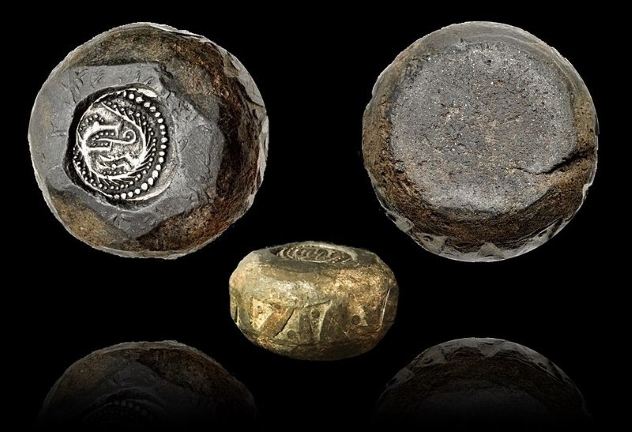
In 2006, a team of scientists from the Royal Society published a paper outlining their theory as to why modern England has such a high number of Germanic male-line ancestors. Specifically, their research concluded that in England today, between 50 and 100 percent of the country’s gene pool contains Germanic Y chromosomes. After an exhaustive study, the team argued that this genetic dominance was achieved by a relatively small number of pagan migrants from what are today Germany, Denmark, and the Netherlands. More importantly, these Angles, Saxons, and Jutes, who initially numbered somewhere between 10,000 and 200,000 immigrants between the fifth and seventh centuries AD, successfully outbred the native Romano-British population and established an “apartheid” society, wherein they controlled economic life.
Two years after the study made waves in the UK press, it was challenged by John Pattison of the University of South Australia, Mawson Lakes. According to Dr. Pattison, the idea that a small number of elite Germanic warriors managed to wipe out their British competition underplays the fact that Germanic tribes and native Britons had been intermarrying for generations prior to the invasions of the fifth century. Ancient chroniclers believed this to be true. Julius Caesar mentions in The Conquest of Gaul that Belgic tribes, who may have been both Celtic and Germanic, lived in Celtic Britain. Therefore, an apartheid-like society was not necessary, as fifth-century Britain may have already contained a large population of Celto-Germanic people.
9 Anglo-Saxon Culture Was Nearly Eradicated
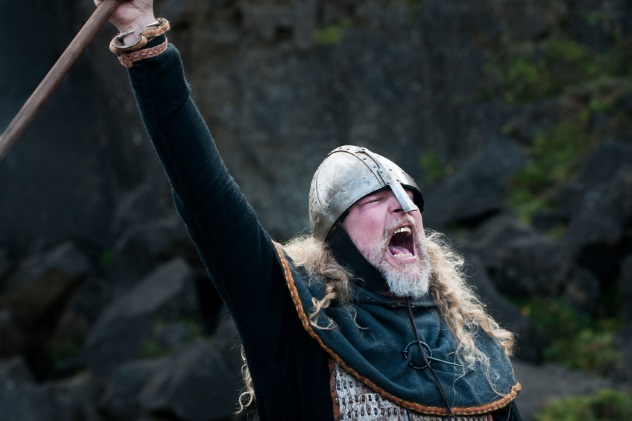
Before they were defeated by the Normans following the Battle of Hastings in 1066, another group of Vikings (the Danes) nearly killed off Anglo-Saxon culture. Beginning in the ninth century, after years of raids along the coasts, Danish Vikings began to settling in Britain and establish small, but powerful, communities. In 851, a Danish army stayed the winter at their quarters in Thanet, while later, a force of some 350 ships attacked Canterbury and London before being defeated by a West Saxon army.
This early defeat did not deter the Danes, for they continued to pour into the island. They became farmers and fearsome warriors, which in turn earned them political power. By the late ninth century, Danish law held sway in 14 shires, most of which were located in the North and East. Under Danelaw, a powerful Anglo-Norse culture pushed Anglo-Saxon culture to the brink of extinction.
For their part, the Anglo-Saxons, who were thoroughly Christian by this point, viewed the mostly pagan Danes as a separate race of demons controlled by Satan himself. Although both groups were culturally and genetically similar to one another, this religious differences helped to perpetuate a cycle of violence that would last well into the 11th century.
8 Anglo-Saxon Rulers Oversaw A Pogrom
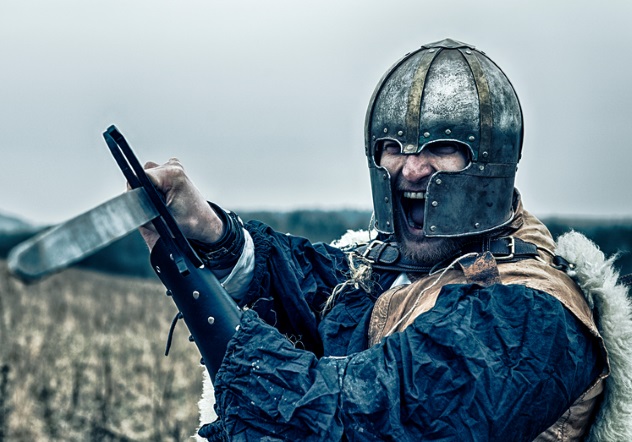
Although the term is most closely associated with European horrors from the 20th century, pogroms, the organized mass slaughter of certain ethnic or religious groups, were not uncommon in the ancient world. In fact, on November 13, 1002, Anglo-Saxon England itself was the scene of a brutal campaign of ethnic terror.
On that date, the English king Aethelred the Unready, whose brother had been murdered years before inside Corfe Castle, issued orders that every Danish settler in England was to be killed. In what would come to be known as the St. Brice’s Day Massacre, Anglo-Saxon citizens attacked their Danish neighbors in droves, especially in Southern England, where Danelaw was weakest. Although the number of deaths has never been determined, it’s likely that hundreds if not thousands of Danish individuals were massacred. In one instance, Anglo-Saxon villagers burned several Danish families alive after setting fire to St. Frideswide’s Church. Two years later, in 1004, King Aethelred issued another order calling for “a just extermination” of all English Danes.
King Aethelred’s actions earned him the everlasting hatred of the Danish crown. By 1013, King Sweyn I of Denmark had been named king of England after Aethelred had fled to Normandy. Less than a year later, Sweyn was dead, and Aethelred’s advisers were seeking his return as king. However, thanks to the bad blood and enmity caused by King Aethelred, Canute, King Sweyn’s son, was busy destroying the Anglo-Saxon countryside in a pogrom of his own.
7 Anglo-Saxon Christianity Was Nearly Destroyed By A Pagan King
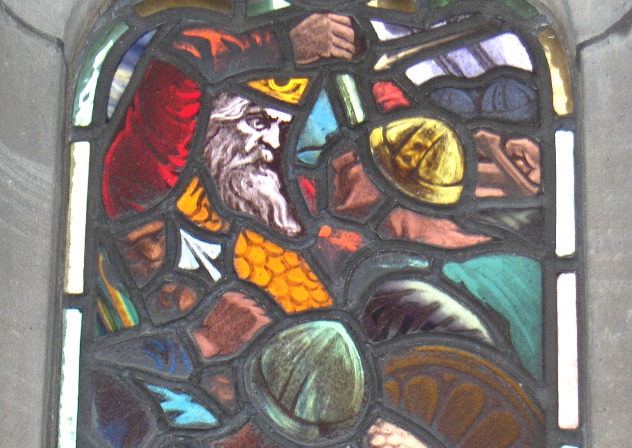
During the first decades of the Anglo-Saxon invasion of Britain, the Anglo-Saxons, who were heathens, decimated the native Christian population. By the seventh century, however, many Anglo-Saxons were converting to Christianity in droves. Still, there were pagan holdouts. In the Kingdom of Mercia, which was located in what is today called the English Midlands, a fearsome ruler named Penda almost upset the balance of power in favor of Anglo-Saxon paganism.
In 628, King Penda established his political supremacy after defeating the Saxon Kingdom of Hwicce at the Battle of Cirencester. After the victory, Penda not only annexed Hwicce territory, but along with the Welsh leader Cadwallon of Gwynedd, he invaded the powerful Kingdom of Northumbria and killed the Christian king Edwin in 632. This victory not only established the Kingdom of Mercia as the most powerful entity in all of England, but it also helped paganism to briefly supplant Christianity as the preferred religion among the Anglo-Saxons.
Although known for being barbarous and cruel, King Penda did not completely abolish Christianity within his kingdom. However, because of his success, other princes converted back to the old faith in order to win favor. Penda’s victory over Oswald of Northumbria at the Battle of Maserfield in 641 helped to prolong pagan supremacy until Penda was killed at the Battle of Winwaed in 655. After the battle, the Christian Northumbrians not only reestablished their dominance in the North and Midlands, but according to historian Charles Plummer, they finally killed off Anglo-Saxon paganism once and for all.
6 Blood Month

Before converting to Christianity, the Angles, Saxons, and Jutes all practiced the rituals and rites of Germanic paganism. Similar to Norse paganism, which was famously practiced by the Vikings of Norway, Iceland, Denmark, and Sweden, Anglo-Saxon paganism flourished in Northwestern Europe until warriors exported it to Roman Britain.
One of the more common practices among Anglo-Saxon pagans was animal sacrifice. According to the Anglo-Saxon scholar and Christian monk Bede, Anglo-Saxon pagans devoted an entire month (November) to performing animal sacrifices. In his Latin-language book The Reckoning of Time, Bede writes that “Blod-monath,” or blood month, was a “time for immolations,” a time when cattle and other animals were slaughtered in order to gain favor with the Germanic gods. It is commonly held today that this autumnal ritual was directed at older or otherwise sickly animals, which were killed in order to provide food and clothing for the winter.
Interestingly, the Anglo-Saxons, like the Celts of Britain, began their new year in November and typically held feasts and ceremonies on the last day of October. Even more intriguing is the fact that the Celtic festival of Samhain, the ancestor of Halloween, was still in practice alongside the similarly gruesome Blood Month. It is still a matter of debate concerning whether or not Blood Month also included human sacrifices.
5 Anglo-Saxon Warriors Fought For The Byzantine Empire
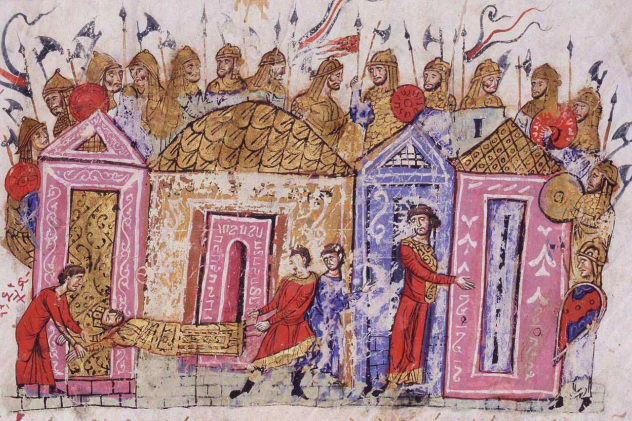
Like all ancient Germanic peoples, the Anglo-Saxons lived in a culture that venerated warriors and military discipline. Anglo-Saxon warriors tended to fight in small groups of roughly 100 men. For weapons, Anglo-Saxon armies favored spears, bows, and axes. In many ways, they weren’t too different from their Viking foes. In fact, both cultures participated in blood feuds, tribal conflicts, and the art of sea raiding.
Typically, most students of history lose interest in the Anglo-Saxons after their defeat at the Battle of Hastings. After years of fighting Danish and Norwegian Vikings, the Anglo-Saxons of England were defeated by French descendants of the Norwegian Vikings. According to the usual story, the Normans established themselves as a class apart, promoting the Norman dialect of French over Old English. Aside from the countryside, where most peasants continued to speak their native tongue, the Anglo-Saxon culture was entirely swallowed by an Anglo-French one.
This reading is not only incorrect on many fronts, but it also overlooks the fact that many Anglo-Saxon refugees fled England for greener pastures. Many Anglo-Saxon warriors offered their services to the Byzantine Empire. These warriors became part of the fabled Varangian Guard, a Byzantine military unit mostly associated with the Vikings of Kievan Rus’. While the Varangian Vikings tend to get most of the glory as far as battle prowess is concerned, the Anglo-Saxons, especially the warrior elite known as the Huscarls, were in-demand warriors who saw battle all over Europe and Asia.
4 They Murdered Their Hosts
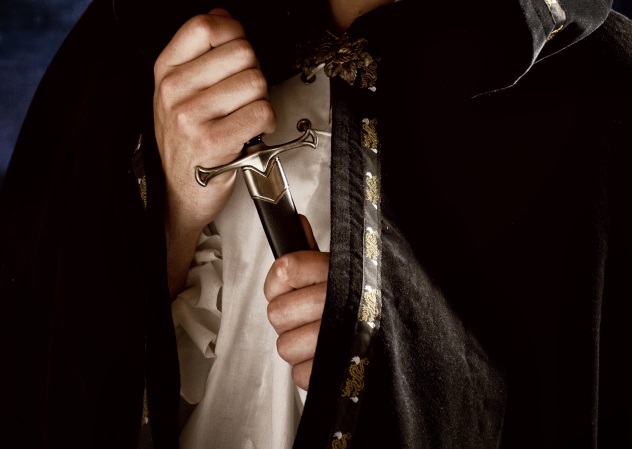
Although this story may be apocryphal, it nevertheless speaks to the Anglo-Saxon culture of treachery: First described by the Welsh historian Nennius in his ninth-century tome Historia Brittonum, the original Anglo-Saxon settlers of Britain, led by the brothers Hengist and Horsa, were given land on the Isle of Thanet by the last Romano-British king, Vortigern. Vortigern and other members of the Romano-British elite invited the Germanic warriors to Britain as mercenaries, tasked with fending off Pictish and Gaelic invasions from Scotland. The Anglo-Saxon warriors proved brave in battle but deceptive in politics. Before long, Hengist and Horsa’s forces had swelled into the full-fledged Kingdom of Kent.
In order to reduce the Anglo-Saxon threat to his own power, Vortigern invited the Saxons to a friendly meeting on Salisbury Plain. The Germanic mercenaries had other ideas, however. Called “Saxons” because of their use of the seax, a type of long dagger, Hengist and Horsa’s men concealed their weapons until the shout of “Eu nimet saxas” (“Draw your knives”) rang through the night. At that point, the Saxon warriors murdered their British hosts.
In truth, the Night of the Long Knives is just too perfect to have actually happened. That being said, the story does neatly summarize how the Anglo-Saxons successfully purged Britain of its ruling Romano-British elite through force.
3 Many Saxon Warriors Had Been Trained In The Roman Army
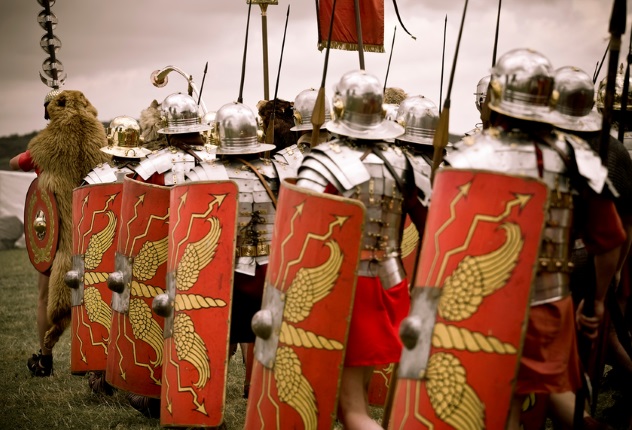
Usually, the Anglo-Saxon invasions of Britain are described as a barbaric victory over a more civilized culture. Without question, the Romano-British elite were better-educated and more cultured (at least by Roman standards) than Anglo-Saxon noblemen. Furthermore, while the Romano-British had access to bathhouses, books, and cities, the Anglo-Saxons lived in rural villages, were mostly illiterate, and typically lived as farmers or pirates. However, the Saxons were familiar with a certain Roman institution—the Roman army.
Because they were known as fierce warriors, the Saxons of Northern Germany and Southern Denmark were recruited in droves by the Roman army. Indeed, the Romans knew all too well about the fighting prowess of the Saxons, for in the third century AD, Saxon tribesmen, along with other Germanic groups like the Frisians, Jutes, and Angles, frequently raided Roman camps in Gaul and near the border with unconquered Germania. From a Roman perspective, the Saxons, along with their close confederates the Franks, were a particular nuisance because they not only attacked Roman soldiers on land, but also liked to disrupt Roman shipping lines near the English Channel.
After the fall of the Western Roman Empire, Roman Britain was left fully exposed. The only remaining fighters who could hold back the invading Picts and Gaels were Roman-trained Britons. It’s likely that the Saxons were invited by the Romano-British because they, too, had served in the Roman army. What is often overlooked by historical accounts is the fact that many of the “invading” Angles, Saxons, and Jutes were already living in Britain, for they had been posted there as members of the late Roman army.
2 Anglo-Saxon Pirates Ravaged The British Coast For Centuries

Frequently overlooked is the fact that the Anglo-Saxons had prior contact with Roman Britain before beginning their migrations in the fifth century AD. Beginning sometime in the third century AD, Saxon pirates raided the British coast. These raids proved so costly that the Roman army in Britain had to establish a string of forts that stretched from Norfolk to Hampshire. These battlements were called the “Saxon Shore” in honor of their adversary.
In AD 285, Carausius, a Roman commander of Belgic extraction, was ordered to halt Saxon piracy in Britain by his general, the future emperor Maximian. Although Carausius proved successful, he was accused of conspiring with pirates in order to obtain some of their plunder. Carausius not only refuted these charges, but he severed his allegiance to Maximian and declared himself emperor of Britain. For years after Carausius’s defeat and the reestablishment of Roman rule in Britain, Saxon pirates in flat-bottomed boats continued to terrorize the English Channel, the North Sea, and the Baltic Sea.
1 Continental Saxons Remained Pagan For Centuries
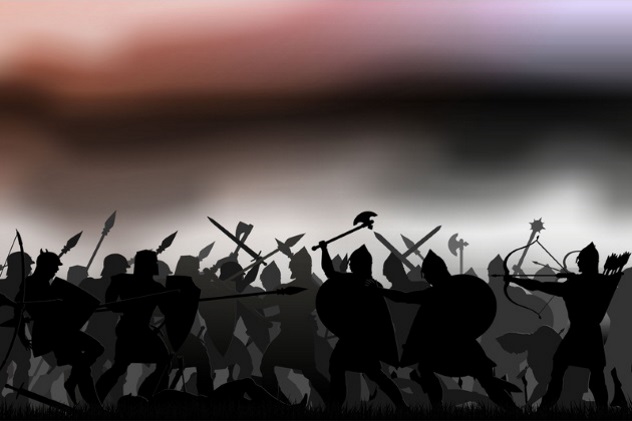
Thanks to wandering monks from Rome and the very active monks of Ireland, Anglo-Saxon Britain began converting to Christianity not long after the establishment of the Kingdom of Kent in the fifth century. Christian Anglo-Saxons established monasteries throughout England, wrote beautiful poems dedicated both to God and the heroes of their pagan past, and constructed magnificent stone churches, some of which are still in use today.
While Anglo-Saxons in Britain embraced Christianity, their brethren on the Continent (aka the rest of Europe) did not. During the eighth and ninth centuries, Saxon pagans remained a thorn in the side of the Germanic kings who maintained an allegiance to Rome. Chief among these kings was the Frankish ruler Charlemagne. Beginning in 772, Frankish and other missionaries pursued a hostile policy designed to eliminate Saxon paganism. In 773, Saint Boniface, himself a Christian Anglo-Saxon from Devonshire, chopped down Thor’s Oak (the Irminsul) in order to proclaim the superiority of Christianity over paganism. The Saxon natives retaliated by murdering Boniface.
Ultimately, Charlemagne’s quest to eradicate Saxon paganism was successful. No move symbolizes this bloody victory quite like the mass killing of some 4,500 pagan Saxons in October 782.
Benjamin Welton is a freelance writer based in Boston. His work has appeared in The Weekly Standard, The Atlantic, Listverse, Metal Injection, and other publications. He currently blogs at literarytrebuchet.blogspot.com.



